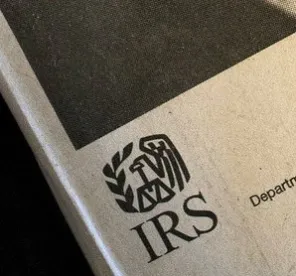Many tax-exempt organizations can now change their state of organization and retain their current tax exemption.
Revenue Procedure 2018-15 provides that, in most circumstances, tax-exempt organizations no longer need to file new exemption applications if they change their organizational forms or states of incorporation. This Revenue Procedure makes obsolete Revenue Rulings 67-390 and 77-469, which previously required new tax-exemption applications in similar circumstances. The Internal Revenue Service (IRS) published Revenue Procedure 2018-15 in Internal Revenue Bulletin 2018-9 on February 26, 2018.
Restructuring Without a New Tax-Exemption Application
Section 501(c) organizations may engage in certain corporate restructurings without reapplying for recognition of their tax exemptions under the following conditions.
The original restructured organization must be
- a US corporation or unincorporated association classified as a corporation; and
- in good standing in the jurisdiction in which it was organized.
The surviving organization must
- be a US corporation or an unincorporated association classified as a corporation;
- carry out the same purposes as the restructured organization;
- use the same tax identification number as the restructured organization; and
- have articles that meet the 501(c)(3) organizational test if the restructured organization was a Section 501(c)(3) organization.
The restructuring transaction between or among the above entities must be one of
- incorporation;
- reincorporation to a different state;
- domestication to a different state; or
- statutory merger.
These conditions are discussed in more detail below.
- The original restructured organization(s) must be a US corporation or a US association classified as a corporation, and it must be in good standing.
The Revenue Procedure allows only certain domestic business entities that are classified as corporations under Treasury Regulations § 301.7701-2(b)(1) or (2) to restructure without requiring the surviving organizations to file new exemption applications.1 This includes state, federal, or tribal corporations, and unincorporated associations that are treated as corporations. Other entities, such as non-US entities, trusts, or entities wholly owned by states or political subdivisions are not within the scope of this Revenue Procedure.2
This Revenue Procedure also requires that the restructured corporation be in good standing with the state in which it was incorporated (or formed, in the case of unincorporated associations).3
- The surviving organization must also be a US corporation or unincorporated association classified as a corporation.
The surviving organization must be a domestic entity classified as a corporation under Treasury Regulations § 301.7701-2(b)(1) or (2), which includes a state, federal, or tribal corporation, and an unincorporated association that is treated as a corporation.
- The surviving organization must carry out the same purposes.
The surviving organization must “carry out the same purposes” as the restructured organization.4 Presumably, this would allow the surviving organization to subsequently expand its purposes to the same extent that the restructured organization could have done had it not restructured.
- The surviving organization must use the same Employer Identification Number (EIN).
The Revenue Procedure does not apply to any restructuring where the surviving organization obtains a new EIN.5
- Section 501(c)(3) surviving organization’s articles must include the provisions required for Section 501(c)(3) organizations.
If the restructuring organization was a Section 501(c)(3) organization, then the articles of organization of the surviving organization must continue to meet the Section 501(c)(3) organizational test. The organizational test requires that the organization’s articles limit the purposes of the organization to exempt purposes and that its assets be dedicated to exempt purposes.6
- The restructuring does not involve disregarded entities, limited liability companies (LLCs), partnerships, or non-US business entities.
If the restructuring organization or the surviving organization is a disregarded entity, LLC, partnership, or non-US business entity, then the Revenue Procedure will not apply.7
Surviving organizations that do not meet the above requirements and want to be recognized as exempt are referred to Revenue Procedure 2018-5 for procedures to apply.8
A surviving organization should report the corporate restructuring on its Form 990 and any change of address on Forms 8822-B and 990.9 A Section 501(c)(4) organization will not be required to file a new notice under Section 506 if it restructures and the surviving organization meets these conditions.10
Examples
The Revenue Procedure provides eight examples applying the new rules. In each of the examples, the restructuring organization is in good standing and the surviving organization carries out the same purposes as the restructuring organization.
The first three examples address domestic entities in restructurings that were described in Revenue Ruling 67-390, but the results in two of those cases are reversed.
- When an exempt unincorporated association is incorporated, the Revenue Procedure applies and the new corporation will continue to be recognized as exempt without filing a new exemption application.
- When a charitable trust is incorporated, the Revenue Procedure does not apply and the new corporation will still need to file a new exemption application in order to be recognized as exempt. Because a trust is not classified as a corporation under Treasury Regulations § 301.7701-2(b)(1) or (2), this restructuring does not meet the conditions described above.
- When an exempt domestic corporation reincorporates in a different state, the Revenue Procedure applies and the new corporation will continue to be recognized as exempt without filing a new exemption application.
The remaining five examples address cases that were not included in the prior guidance. One of these addresses the case where an exempt corporation changes its state of incorporation by domesticating rather than by reincorporating in a different state. As with the reincorporating organization, an organization that domesticates to a new state is not required to file a new exemption application.
The next two examples address cases involving an LLC or a foreign corporation. The Revenue Procedure does not apply to either of these types of entities. Thus, in the case of an exempt domestic corporation that converts into an LLC, the LLC is required to file a new exemption application if it wants to be recognized as tax-exempt. Similarly, in the case of an exempt foreign corporation that reincorporates as a domestic corporation, the surviving domestic corporation is also required to file a new exemption application in order to be recognized as tax-exempt.
The final two examples involve exempt domestic corporations that merge into existing entities. In the first of these examples, two exempt domestic corporations merge. The surviving organization after this merger is not required to file a new exemption application. In the second example, an exempt domestic corporation merges into a disregarded LLC of another exempt domestic corporation. The example provides that the LLC will be required to file an exemption application if it seeks to be recognized as tax-exempt. Although not addressed by the Revenue Procedure, this example presumably is intended to illustrate that the Revenue Procedure will not apply if the LLC seeks to be exempt as a separate regarded entity rather than remain as a disregarded entity of its exempt parent.
1. Rev. Proc. 2018-15, § 5.01.
2. Rev. Proc. 2018-15, §§ 2, 3, 5.01.
3. Rev. Proc. 2018-15, § 5.02.
4. Rev. Proc. 2018-15, § 5.01(3).
5. Rev. Proc. 2018-15, § 5.04(2).
6. Rev. Proc. 2018-15, § 5.03; Treas. Reg. § 1.501(c)(3)-1(b).
7. Rev. Proc. 2018-15, § 5.04(1).
8. Rev. Proc. 2018-15, § 5.05.
9. Rev. Proc. 2018-15, § 5.06.
10. Rev. Proc. 2018-15, § 8.03.




 />i
/>i
